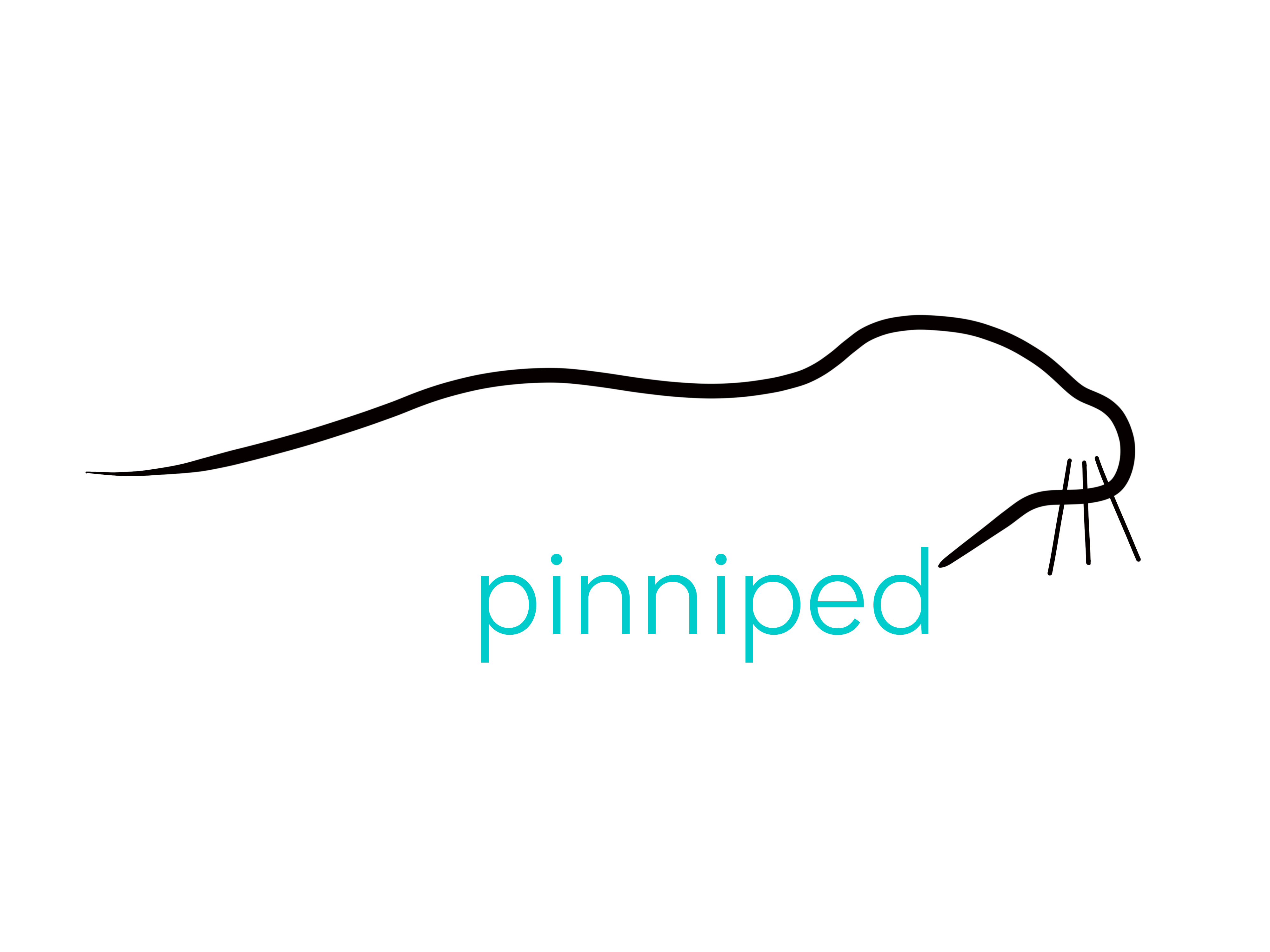This week’s seal is (probably) one of our favourite seals, ever. Not one you come across regularly, and we frequently wonder why, as frankly, this is the most jazzy seal you’ll ever see. And not easy to mistake. With an absolutely striking black and white banded coat, and an all-black head, this medium sized seal is a beauty. It is, the Ribbon Seal (Histriophoca fasciata).
This seal is in its own genus, with ‘fasciata‘ referring to the stripes, and is found throughout the Northern Pacific Ocean, and into the Arctic. This includes countries such as Japan, Russia and The States (Alaska), and they are found most regularly on ice, where their stark black and white camouflages them well. Females often have paler and more muted colouration than the males, often looking more brown/cream than black/white. Striped pattern also varies tremendously between individuals, making identification using photography fairly easy, though essentially there are 4 white ‘bands’ on an otherwise black body; one round the neck, one either side of the seal’s body, forming a circular shape around the fore flippers, and one round the tail.
Pups of the species are born on the ice in March-May, during Spring. They have fluffy white-grey lanugo when when born, and are nursed for just a month before being weaned. Around this time they moult into a juvenile coat that is more blue-grey, with silvery undersides. It is not until around 4 years old that they gain the trademark patterning.
Outside of the breeding season, this species is fairly solitary, spending huge amounts of time, possibly all of its time, at sea far offshore. Because of this, researchers know little about where they go or what they get up to. We know that they dive routinely to fairly shallow depths of on average 200 metres, and that they feed on a range of fish and cephalopods when mature. Younger individuals consume more invertebrates such as small crustaceans, so scientists predict they may learn to forage these smaller prey items, growing in skill and size of prey with age. However there is a lot more to know, and plenty of opportunity to research even the most basic of biology and ecology on these interesting beasts.
For years the Ribbon Seal was exploited for its pelt, flesh and oils, but thankfully this ceased in 1994. Since then numbers have appeared to be growing, and with an estimated population size of 365, 000 individuals, the IUCN classifies them as Least Concern. Good news, except for as an ice-reliant species, there could be trouble in the future. As well as this, there is still a general lack of information, giving an incomplete picture of the overall state of these seals. It all goes to show how important new research will be in adequately assessing and protecting these fabulous pinnipeds.
If you’d like more seals on your #SealSunday, head over to the Pinnipedia, or click the link direct to the Ribbon Seal page -> www.pinniped.org/front-page/pinnipedia/ribbon-seal. Today’s picture was taken by Michael Cameron on assignment for NOAA.

